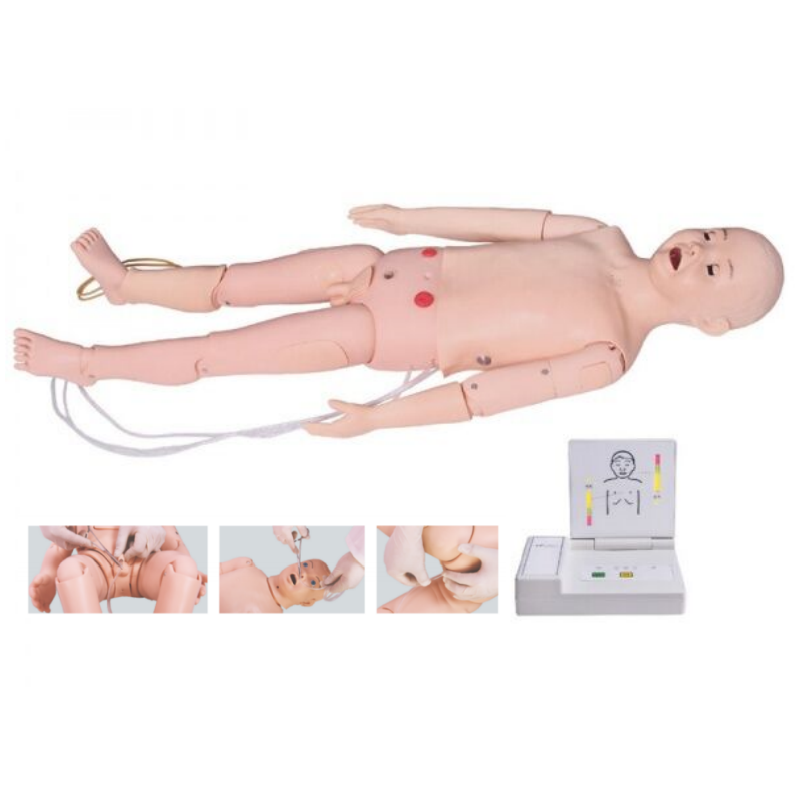The three-year-old child care simulator plays a vital role in medical education and training, which greatly improves the professional skills and clinical coping ability of medical students and healthcare personnel. Here is a detailed explanation of its importance:

1. Provide a realistic clinical environment
The 3-year old child nursing simulation human model can highly restore the real physiological structure and pathological characteristics of children, and provide a realistic clinical operating environment for medical students and medical staff. By practicing in such an environment, medical staff can have a deeper understanding of the physiological characteristics of children and become familiar with and master the nursing skills for children.
2. Improve operation skills
Through the simulated human model, medical students and medical staff can repeatedly train in various nursing operations, such as airway management, venipunction, cardiopulmonary resuscitation, etc. This repeated practice can not only improve the proficiency of the operation, but also help them better master the operation skills to ensure that they can be quickly and accurately completed in the actual clinical operation.
3. Develop clinical thinking
The simulated human model can not only simulate the physiological and pathological state of children, but also simulate various complex clinical conditions. In simulation training, medical students and medical staff need to make judgment and take corresponding nursing measures according to the state and response of the model. This training can develop their clinical thinking and decision-making skills and improve their ability to respond to emergency situations.
4. Reduce clinical risk
In clinical practice, nursing operations for children are often faced with high risks. By training with simulated human models, medical students and healthcare personnel can perform various operational exercises without actual risk, thereby reducing the incidence of errors and accidents in actual clinical operations.
5. Promote teamwork
Teamwork is a very important aspect of medical education and training. Team training through simulated human models can enable medical students and medical staff to better understand each other's roles and responsibilities, and learn to collaborate and cooperate with each other. This training can improve their teamwork ability in clinical work and ensure that patients can receive timely and effective treatment.
To sum up, the three-year-old child care simulator model plays an important role in medical education and training. It not only improves the professional skills and clinical coping abilities of medical students and healthcare staff, but also promotes teamwork and reduces clinical risks. Therefore, it is very necessary to widely use the simulated human model in medical education and training.
